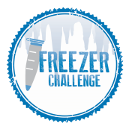Ultra-Low Temperature Freezer Optimization Yields Large Energy Savings for Center of Disease Control and Prevention
Introduction
The U.S. Department of Health and Human Services (HHS) Centers for Disease Control and Prevention (CDC) implemented a successful program to effectively manage ultra-low temperature (ULT) freezers to increase freezer reliability and reduce plug load in laboratories.
In 2017, the CDC won as the top competitor in the government sector of the North American Laboratory Freezer Challenge (NALFC) with a combined savings of 367,400 kWh per year.
More than 1,300 individual laboratories participated in the challenge across academia, pharmaceutical, government, and other sectors.
Program History
The original idea for the freezer challenge came from the University of California, Davis (UC Davis) and was further developed by The University of Colorado, Boulder (UC Boulder). These universities envisioned the challenge as a way for different institutions to compete while taking actions that would make their laboratory freezers more efficient and further reduce their energy consumption. In 2011, the CDC's Quality and Sustainability Office provided subject matter expertise and assistance in a pilot freezer challenge between UC Davis and UC Boulder.
After this pilot, the program was expanded to include private and public laboratories across the United States, eventually growing into the NALFC of today. Since its pilot, the challenge has continued to grow, and as of 2018 is open to the international community in the International Laboratory Freezer Challenge (ILFC) as well.
The challenge continues to focus on five key areas:
- Sound management practices
- Temperature tuning
- Unit retirements/upgrades and unplugs
- Forward-looking practices
- Freezer and sample inventory.
Project Highlights
ULTs (-80°C) are one of the most energy-intensive pieces of laboratory equipment. The average ULT freezer consumes 20 kWh per day and causes an additional 4.5 kWh per day in building cooling requirements.
The following are highlights of CDC's energy and cost savings from the challenge.
- CDC's combined energy savings from the ULT freezer initiatives implemented is 367,400 kWh per year.
- CDC's six labs removed 8,798 samples from cold storage units. By eliminating these samples, CDC was able to consolidate resources and retire 21 ULT freezers. Retiring those freezers resulted in an annual replacement cost avoidance of $31,500 per year. Combining the annual energy, maintenance, and replacement cost savings equal a total of $67,457 per year.
Beyond the substantial energy savings as a result of CDC's freezer optimization and energy reduction efforts, key benefits from this program include increased freezer reliability and specimen security, protecting years of invaluable scientific research.
Impacts
Building off this success, the CDC sought additional opportunities to optimize freezer management agency-wide with the creation of the Freezer Optimization Tiger Team, which was tasked with the development of a unified freezer management process, improving storage capacity, reducing freezer failure, and improving customer satisfaction.
Other goal areas included:
- Standardization
- Asset management
- Quality assurance.
The tiger team evaluated existing freezer management systems and created a CDC freezer dashboard detailing freezer age, location, and energy usage. They also developed freezer procurement guidance and planned preventative maintenance guidance, while engaging all levels of CDC staff to ensure optimal freezer asset management.
The Freezer Optimization Tiger Team drafted a procurement guidance document with CDC's Office of Acquisition Services to enable scientists to purchase freezers with sustainability in mind. The team also wrote a sustainability appendix for the Clinical and Laboratory Standards Institute that includes freezer maintenance guidelines.
If you are interested in improving your laboratory best management practices and saving energy in your labs, think about joining the freezer challenge today.
